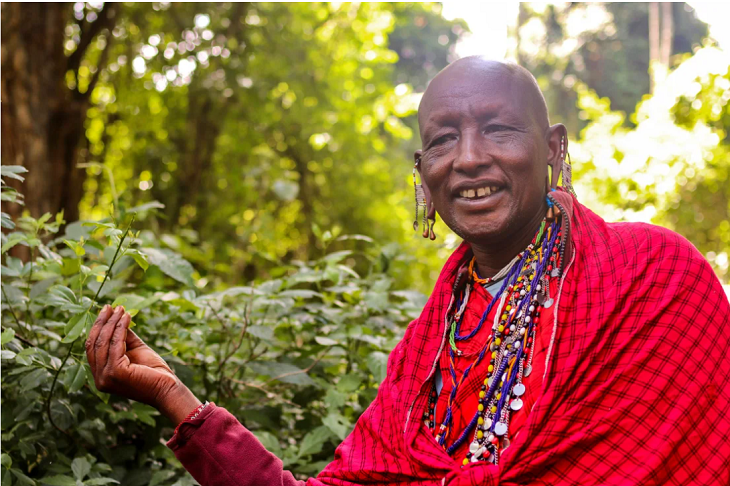Kenya’s Naimina Enkiyio, or the “Forest of the Lost Child,” is under threat. It is said to be haunted by the spirit of a young girl lost while herding her family’s livestock. The remote place is sacred to the Indigenous Maasai people, of whom around 25,000 live in and around it.
Parmuat Ntirua Koikai, a Maasai elder, sees himself as a custodian of the forest. He and most of the community believe they must protect it – and in turn, they believe the forest will protect them. “Without the forest, there would be no people,” he says. “We use it as a clinic, a hospital, so we must handle it with a lot of care.”
But there is a growing fear among the community and conservationists that this could soon change, due to threats from land privatization, cultural shifts, and the climate crisis. Rob O’Meara, a conservationist who, together with his wife Sarah, lives at the center of the forest with permission from the Maasai, explains how the forest if preserved, could provide a lifeline for humans and animals amidst growing climate change consequences, “It is a crucial drought reserve for elephants and a lot of the wildlife that comes up from the Mara Serengeti ecosystem”.
The Maasai elders explain that the biggest threat to the forest is land adjudication, a Kenyan government policy whereby communal land is subdivided into individual plots. This practice has ecological consequences, leading not only to an increase in fenced enclosures that prevent wildlife movement but also roads, crop farming, and timber trade.
The elders say this policy goes against the Maasai tradition of communal ownership, representing a disregard for their culture. According to eighty-five-year-old Oltukai Ole Koikai, the eldest of the group, “If you own the land, you can do whatever you want to do: you can sell it, you can give it to a different person outside the community … They don’t know our culture, they don’t know the forest, all they know is maize and beans.”
Ole Koikai blames the “digital” generation who will not learn the ways of the forest and how to live alongside it. But it is the handful of Maasai youths who are committed to maintaining the forest, such as Josephat Olokula, 25, that provide hope for the future. While modernization is unavoidable, attractive opportunities available to the younger generation within their communities may allow the cultural values and respect for the forest to live on.
Related Content: ELDOWAS steps up Efforts to conserve Forests In Kenya
The article is extracted from the recent report by CNN as part of Call to Earth See more from Call to Earth: https://edition.cnn.com/interactive/call-to-earth/#/

